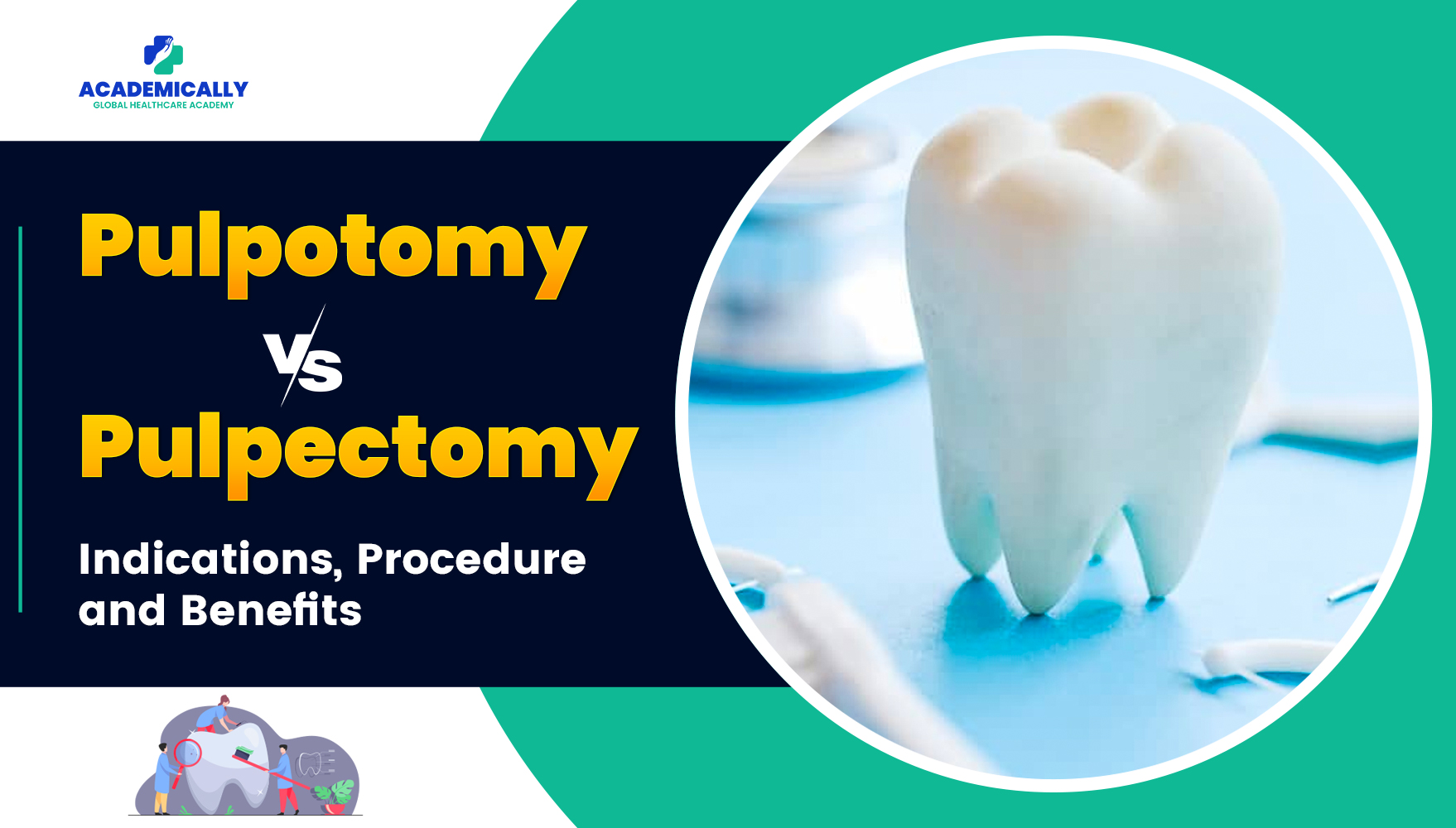Maintaining good oral health is crucial for overall well-being, and when issues arise within the tooth's pulp, prompt treatment is essential to prevent further complications. Pulpotomy and pulpectomy are two common endodontic procedures used to address problems with the dental pulp.
In this blog, we'll see the differences between pulpotomy and pulpectomy, their indications, procedures, and what to expect from each.
Pulpotomy
Complete removal of the coronal portion of the dental pulp, followed by placement of suitable dressing or medicament that will promote healing and preserve vitality of the tooth.
Indications
- Vital teeth
- Only coronal pulp involvement
- Healthy periodontium
- Absence of infection/abscess
- Absence of fistula
- Absence of spontaneous pain
- Absence of pulp floor involvement
- Absence of intra-radicular involvement
Procedure
Anaesthesia: The dentist administers local anaesthesia to numb the affected tooth and surrounding area.
Isolation: Rubber dam is placed to isolate the tooth, reducing moisture from saliva.
Access and Removal: The dentist accesses the pulp chamber through a small opening in the crown of the tooth and removes the diseased or infected pulp tissue.
Medication: A medicated material is placed to help disinfect and soothe the remaining pulp tissue.
Restoration: The tooth is restored with a filling material to seal the access opening and protect the remaining pulp.
Benefits
- Pulpotomy diminishes the likelihood of requiring more invasive dental procedures in the future.
- It swiftly improves the health and longevity of a child's teeth.
- By selectively removing decayed portions while preserving the majority of the tooth structure, pulpotomy aids in maintaining permanent teeth for a longer duration.
Pulpectomy
Complete removal of necrotic pulpal tissues from root canals and coronal portion of non-vital primary teeth.
Indications
- Non-vital teeth
- Primary teeth with necrotic pulp
- Coronal and radicular pulp involvement
- Dental abscess
- Irreversible pulpitis
- Pulpless primary teeth with need for arch maintenance
- Absence of underlying cyst
Procedure
Anaesthesia: Similar to pulpotomy, local anaesthesia is administered to ensure the patient's comfort.
Isolation: Rubber dam is placed to isolate the tooth, reducing moisture from saliva.
Access and Cleaning: The dentist creates an opening in the tooth's crown, gaining access to the pulp chamber and root canals. Using specialised instruments, they carefully clean and shape the root canals to remove all infected or damaged pulp tissue.
Medication and Filling: After thorough cleaning, the root canals are filled with a biocompatible material to prevent recontamination and promote healing.
Restoration: Finally, the access opening in the tooth is sealed with a filling material or crown to restore its structure and function.
Benefits
- This process can save damaged teeth and eliminate the need for a more complicated root canal procedure.
- By removing only the infected tissue and retaining the rest of the natural tooth structure, a pulpectomy saves the tooth from extraction.
- With proper oral hygiene and regular checkups, a pulpectomy can provide long-lasting relief and prevent the recurrence of infection or decay.
Pulpotomy and pulpectomy are valuable endodontic procedures aimed at preserving teeth affected by pulp-related issues. While pulpotomy focuses on preserving the affected tooth's vitality in primary or immature permanent teeth, pulpectomy involves complete removal of infected pulp tissue from permanent teeth to save them from extraction.
Choosing the right procedure depends on several factors, including the severity of the infection, the patient's age, and the vitality of the teeth.

Fill up this form for a free one on one counselling session.

